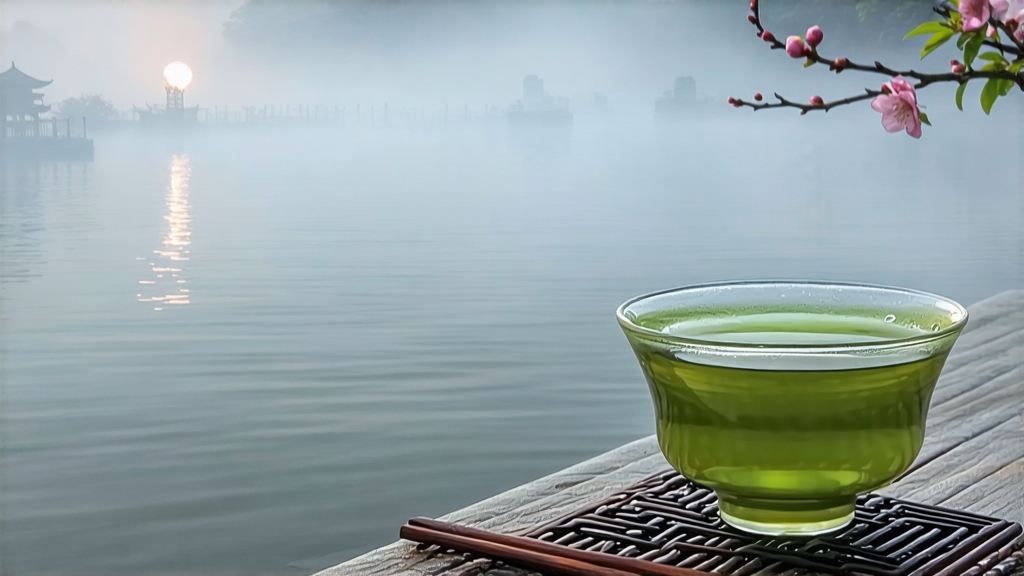
Biluochun, whose name translates literally to “Green Snail Spring,” is one of China’s ten most celebrated teas, yet it remains a quiet gem outside specialist circles. Grown on the mist-locked islands of Dongting Mountain in Taihu Lake, Jiangsu Province, this tiny, spiral-shaped green tea carries within its downy curls the perfume of apricot blossoms, the minerality of lake-cooled air, and six centuries of imperial lore. To understand Biluochun is to listen to a soft-voiced story that begins in the Yuan dynasty, when a tea monk noticed that the highest bushes, half-hidden by fruit trees, yielded leaves of uncommon aroma. Locals called the tea “Xia Sha Ren Xiang”—“scary fragrance”—because its fragrance was almost too seductive. The Kangxi Emperor, touring the south in 1699, rechristened it Biluochun to honor its shape and harvest season, thereby sealing its fate as tribute tea.
Today the appellation “Biluochun” is legally protected; only leaf plucked within a 12-km radius of Dongting’s East and West mountains may bear the name. Two genetic cultivars dominate: the small-leaf “Dongting group” that gives classic floral notes, and the more frost-resistant “Fuding Da Bai” transplant that adds plush sweetness. Purists insist the original Wuniu variety, sparsely planted on cliff-side terraces, offers the most haunting cup, but quantities are so limited that even Suzhou residents queue at dawn for a mere 50 g allotment.
The crafting of Biluochun is a race against time and enzymatic chemistry. Picking begins around Grain Rain, when nights are still cool enough to lock in aromatics yet days are warm enough for rapid growth. Only the bud and the immediate adjacent leaf are taken, ideally before 9 a.m. while dew lingers. A skilled picker can gather 600 g of fresh leaf per hour; it takes 70,000 buds—roughly seven hours of nimble fingers—to yield 500 g of finished tea.
Withering is almost imperceptible: the leaf is simply laid 2 cm deep on bamboo trays for 30–40 minutes, long enough for the surface moisture to evaporate but short enough to preserve the vivid jade color. What follows is a three-stage pan-firing choreography that has changed little since the Ming dynasty. The first “kill-green” pass lasts four minutes at 180 °C; the tea master tosses the leaf with bare hands, relying on auditory cues—the sudden drop in crackle—to judge when enzymes are neutralized. Temperature is then lowered to 70 °C for the rolling phase, during which the leaf is alternately shaken, pressed, and rubbed against the wok’s curved wall. The goal is to break epidermal cells so that sap coats the surface, yet keep the bud intact. In the final “li tiao” or “reasoning” stage, heat drops to 50 °C and movements become gentler, coaxing the leaf into its signature tight spiral. Throughout, the worker’s hands are the only thermometer; experience replaces probes. When done correctly, moisture falls to 6 %, the downy hairs stand erect, and the leaf resembles a tiny jade snail shell.
To brew Biluochun well, one must respect its delicacy. Use spring water filtered through charcoal if possible; hard water flattens the peach-blossom top note. Pre-heat a tall glass or a 150 ml gaiwan, then add 3 g of leaf. The traditional Suzhou method calls for 75 °C water poured in a thin stream along the glass wall so that the buds descend slowly like snowflakes. After 45 seconds the liquor turns the color of early morning reed tips; inhale gently and you will catch the scent of loquat blossom, white sesame, and a trace of marine air. The first infusion is soft, almost whispered, with a sweetness that appears at the sides of the tongue. Second infusion, 20 seconds, releases snap pea and water chestnut; third, 40 seconds, adds a faint iron-rich minerality reminiscent of Taihu clamshells. By the fifth infusion the leaves fully unfurl, revealing the intact bud and single leaf—proof of meticulous plucking.
Professional cupping follows a stricter protocol: 3 g, 150 ml, 80 °C, 5 minutes. Judges look for four benchmarks: shape (tight, uniform,